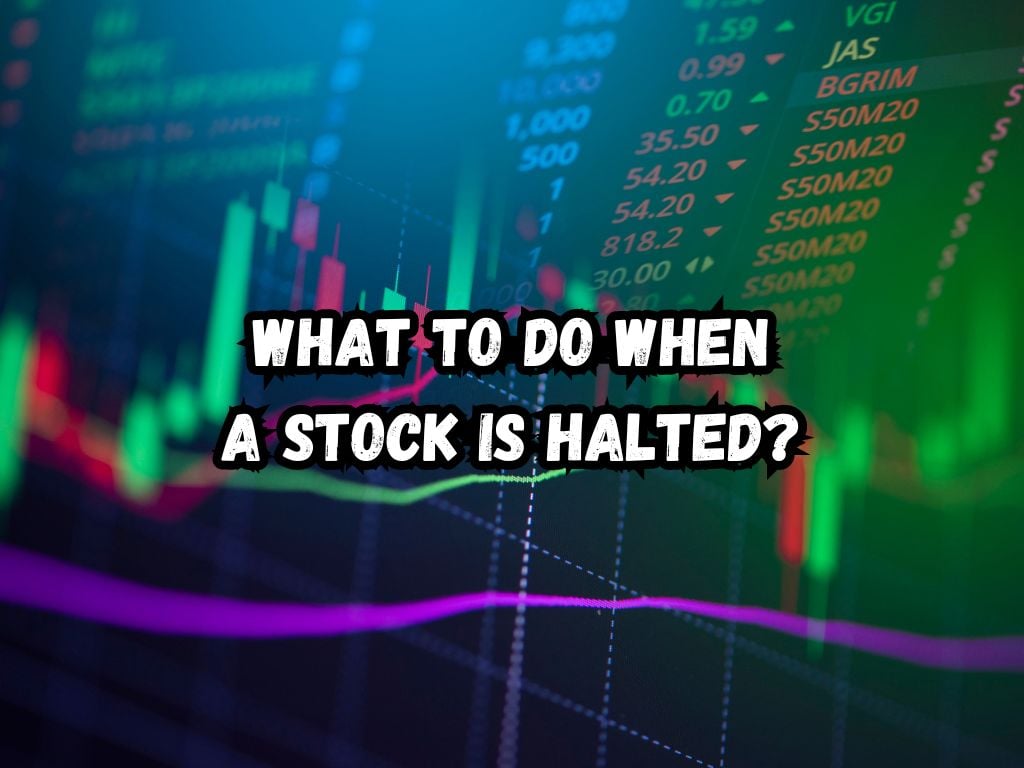The world of stock investment is full of unpredictable twists and turns, one of which is a stock halt. Investors can find themselves abruptly staring at a ‘halt’ sign.
Understanding why and when this happens is crucial. Let’s delve into the details of trading halts and discuss what measures you can take to make the situation work in your favor.
What To Do When A Stock Is Halted?
Trading in a stock often halts because of an expected news announcement, regulatory concerns, or market volatility. Different ‘halt codes’ are issued for the reasons for halting.
For instance, issues like discrepancies in a company’s financial statements to irregularities in trading patterns can all lead a stock to halt. Market-related halts, including circuit breakers, are another cause.
When individual stocks or market indices undergo beyond stipulated percentage fluctuations within a short duration, it leads to a temporary pause in trading to prevent panic selling.

Investigating the Type of Halt
By knowing the halt code, investors can interpret the nature of the halt and plan accordingly. A ‘T1’ code, for example, suggests a news pending halt. It allows the market to absorb the news without dramatic price shifts.
On the flip side, a ‘H10’ halt code would mean there are significant regulatory concerns about the company. Investors should ideally wait for the issue to get sorted before making further investment decisions.
Immediate Steps to Take Once a Stock is Halted
When you find your stock halted, the first step is to verify the halt’s details. Authenticate the halt code and reason via official exchange announcements.
You can gather relevant news from reliable financial news sources. This process will empower you with insights that can substantially influence your investment strategy.
Long-term Strategies While Dealing with Stock Halts
How adequately you handle stock halts has a significant bearing on your investment portfolio. It’s also a definitive test for your risk management abilities.
A shrewd risk managing tactic is diversification. It lessens the impact by spreading investments across different stocks and sectors.
Dealing with Volatility Post-Halt
The resumption of trading post-halt often leads to high market volatility. It’s a vigilant task to observe the price actions and market sentiment after the halt lifts.
This situation calls for managing stop-losses and targets accordingly. An in-depth understanding of market behavior paves the way for favorable trading decisions during these critical periods.
Communication with Brokers
Following a stock halt, it’s crucial to liaise closely with your broker. Brokers can clarify whether limit orders remain active during the halt.
They could also shed light on the procedures for canceling or changing open orders. In essence, effective communication with your broker can prove vital in acting promptly following a halt.

Stock Halt vs. Suspension
It’s essential to differentiate between a stock halt and a suspension. A halt is temporary, often last for under an hour, and sometimes extend to a few days. Meanwhile, a suspension can go on indefinitely until serious regulatory concerns get addressed.
The resumption of trading after a suspension can lead to a sharp decline in the stock price, substantially eroding the value of investments held.
Frequently Asked Questions
What exactly does it mean when a stock is halted?
A stock halt is a temporary suspension of trading for a specific stock on an exchange.
How long can a stock halt last?
A stock halt can last anywhere from a few minutes to a few hours.
No, trading is suspended during a halt, including buying and selling shares.
Are there any signs that a stock halt is about to occur?
Stock halts often occur suddenly and can be hard to predict. They typically happen due to significant company news or market events.
How are stock halts different from stock delisting?
While both stop trading, a stock halt is temporary, while delisting means the removal of the stock from the exchange permanently.
Conclusion
A stock halt is a common market mechanism, and as an investor, staying informed can help in navigating the situation sensibly.
Equip yourself with the knowledge of halt codes, maintain a diversified portfolio, and communicate effectively with your brokers.
These steps aid in turning an unsettling situation into a tactical maneuver, adding robustness to your overall investment strategy.


 Tags:
Tags:










